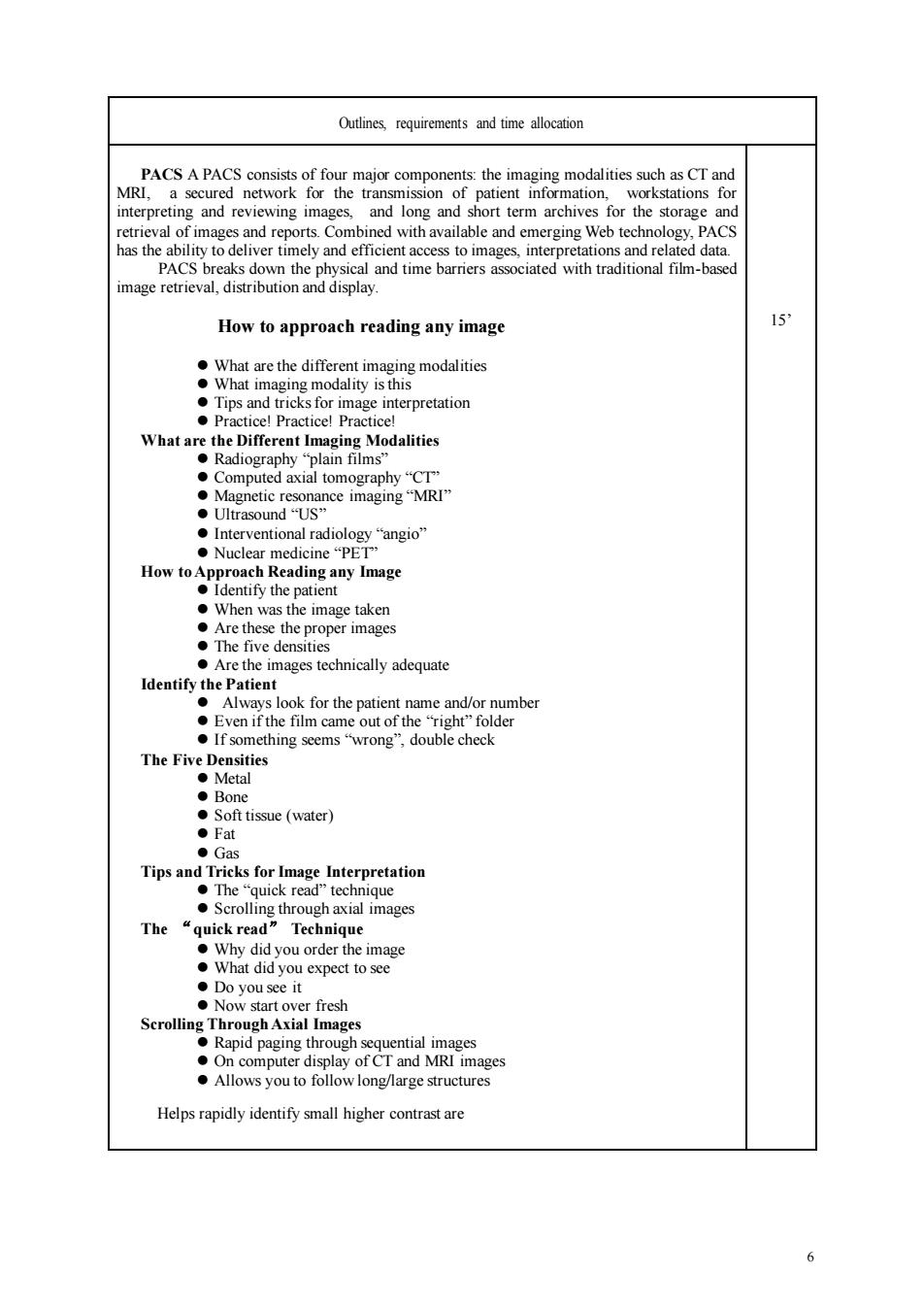正在加载图片...

Outlines requirements and time allocation PACSAPACS interpreting and reviewing images and long and short term archives for the storage and ielofWsindreportsC ned with available and emerging Web technology.PA PACS preaks down the ph mage retreval,istrbutionanddispay. How to approach reading any image 15 What are the different imaging modalities Computed Interventional radiology"angio" 。Nucear medicine"PET When was the image taken The proper images Are the images technically adequate look for the patient name and/or Even if the film cameou of the tissue (water) ●Fat Tips and The ngthrough axial imags Tec nique ●Do you see it Scrolling Thr ouhAxial Image struct mage Helps rapidly identify small6 Outlines, requirements and time allocation PACS A PACS consists of four major components: the imaging modalities such as CT and MRI, a secured network for the transmission of patient information, workstations for interpreting and reviewing images, and long and short term archives for the storage and retrieval of images and reports. Combined with available and emerging Web technology, PACS has the ability to deliver timely and efficient access to images, interpretations and related data. PACS breaks down the physical and time barriers associated with traditional film-based image retrieval, distribution and display. How to approach reading any image ⚫ What are the different imaging modalities ⚫ What imaging modality is this ⚫ Tips and tricks for image interpretation ⚫ Practice! Practice! Practice! What are the Different Imaging Modalities ⚫ Radiography “plain films” ⚫ Computed axial tomography “CT” ⚫ Magnetic resonance imaging “MRI” ⚫ Ultrasound “US” ⚫ Interventional radiology “angio” ⚫ Nuclear medicine “PET” How to Approach Reading any Image ⚫ Identify the patient ⚫ When was the image taken ⚫ Are these the proper images ⚫ The five densities ⚫ Are the images technically adequate Identify the Patient ⚫ Always look for the patient name and/or number ⚫ Even if the film came out of the “right” folder ⚫ If something seems “wrong”, double check The Five Densities ⚫ Metal ⚫ Bone ⚫ Soft tissue (water) ⚫ Fat ⚫ Gas Tips and Tricks for Image Interpretation ⚫ The “quick read” technique ⚫ Scrolling through axial images The “quick read” Technique ⚫ Why did you order the image ⚫ What did you expect to see ⚫ Do you see it ⚫ Now start over fresh Scrolling Through Axial Images ⚫ Rapid paging through sequential images ⚫ On computer display of CT and MRI images ⚫ Allows you to follow long/large structures Helps rapidly identify small higher contrast are 15’